Spanish Naval Air Arm: Rotary Wings at Naval Station Rota
Written by Patrick Roegies, Paul Gross, Marco Dijkshoorn and Hans Looijmans
All images by authors
Introduction
The Spanish Naval Air Arm or Flotilla de Aeronaves de la Armada (FLOAN) is concentrated at Base Naval de Rota-B.N. Rota (Rota Navy Base). FLOAN operates both fixed wing aircraft and rotary wing aircraft. B. N. Rota was selected as it’s home since the facility is situated near the south coast of Spain, in the province of Cadiz and is equipped with both a military harbor and air base facilities.
Origins
The FLOAN started operations out of B.N. Rota on 26 September 1953, when an agreement was signed between the Spanish and United States governments which stated the joint future use of NAS Rota as a Naval Air Base. During that same year the Spanish navy started the formation of their own Naval Air Arm and searched for volunteers as their future naval aviators. These volunteers immediately started their helicopter flying training in the United States. The helicopter flying training was provided at the Bell company facility in Fort Worth, Texas and the first three students completed their training on 15 February 1954. Since 1954, the Spanish Naval Air Arms developed itself into a fully independent air arm able to support and provide any naval operation by air.
Current situation
Currently the FLOAN operates 7 fully equipped squadrons of which 4 are rotary wing squadrons, 2 fixed wing squadrons and 1 UAV squadron. Patrick Roegies, Paul Gross, Hans Looijmans and Marco Dijkshoorn visited B.N. Rota and report about current tasks and future developments of the Spanish Naval Air Forces rotary wing squadrons.
Escuadrilla Type in use Squadron emblem
Eslla 003 AB212 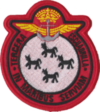
Eslla 005 SH-3H 
Eslla 006 Hughes 500 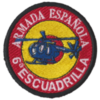
Eslla 010 SH-60B/SH-60F 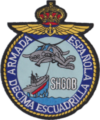
The Spanish Navy uses a modest variety of helicopters within their operational fleet with the oldest helicopters being the SH-3 Sea King and their latest acquired type the SH-60 Seahawk. Recently the Hughes 500369 and AB212 fleet are undergoing a modernization program with the purpose to extend the technical lifetime of the helicopters and to increase their capabilities.
The next life of the “Gato’s”
Escuadrilla 003 was erected in 1965 and was initially equipped with four Agusta-Bell AB204 anti-submarine warfare (ASW) helicopters. These AB204ASW’s remained in operational use until October 1978. In 1974 the squadron received their first twin-engined Augusta-Bell 212 (AB212) or “Gato” as referred to by the Spanish Naval Air Arm which is currently still use by the squadron. The first batch of AB212’s was delivered in 1974 and consisted of four helicopters. In the course of 1974 two additional AB212’s were received and the last of the twelve “Gato’s ” were received during the 1980’s.
The AB212 is a two-bladed single-engine helicopter that can be fitted with mission-specific auxiliary equipment. The maximum speed of the helicopter is approximately 130 knots, depending on the configuration of the helicopter.
Lt. Ramòn Lacave Lena, a pilot at Escuadrilla 003 who has 2,5 years of experience in the squadron and over 540 hours on the AB212 explains that the squadron has a wide variety of appointed tasks. The role of the AB212 however cannot be compared to the role of the SH-60 Seahawk. Since the AB212 is the only helicopter able to deploy to all the naval vessels, with the exception of the F-100 class vessels. This makes the AB212 very versatile. On the downside the AB212 has a maximum flight duration of only 2 – 3.5 hours, whereas the SH-60 Seahawk has a flight duration of at least 4 hours.
The main tasks appointed to Escuadrilla 003 have been partially changed after the refurbishment of the helicopter. Before the refurbishment the conventional, main tasks were operating with amphibious forces missions both, ashore or operating from naval vessels. This task included tactical transport of troops, fire support missions such as helicopter escorts, convoy escort, maritime interdiction support, amphibious operations support and asymmetric threat defense such as light strike force (LSF) and fast intruder attack craft (FIAC), landing force support, armed reconnaissance and rotary wing combat air support (RW-CAS).
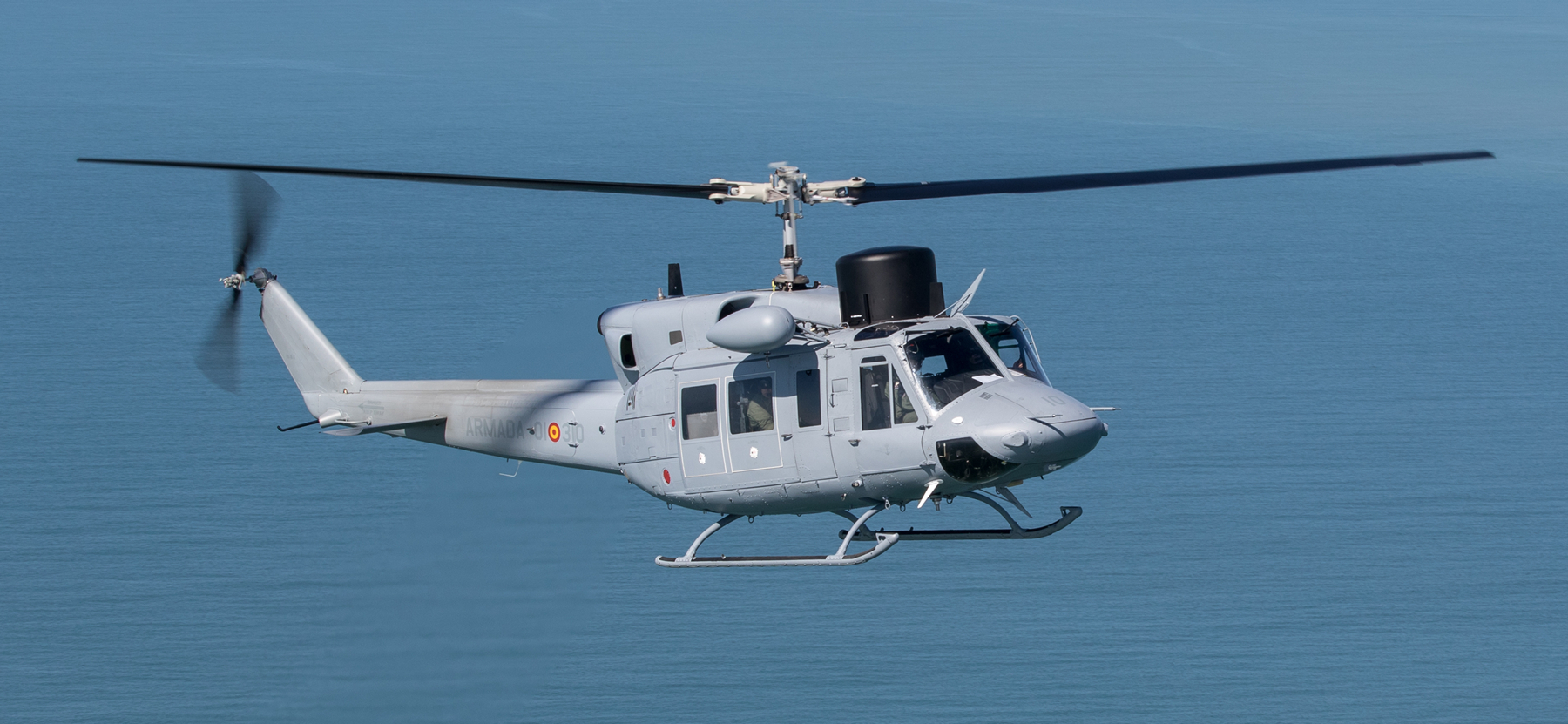
Besides these main tasks the squadron also assists during deployment and recovery of operational units, patrols and support of special forces (fast roping, special insertion and extraction rig (SPIE), rappelling, helicopter casting, parachuting, etc.), logistic transport of personnel and materiel both external and internal cargo, search and rescue (SAR), Vertical on board delivery (VOD), ship vertical replenishment (VERTREP), casualty evacuation (CASEVAC) and intelligence, surveillance and reconnaissance (ISR) missions.
In the near future however the tasks of the squadron will be expanded even further and the squadron will also perform the tasks of maritime interdiction and surveillance.
Lt. Ramòn Lacave Lena further explains that the modernization program is in full progress now and the first batch of three helicopters have been delivered. The upgrade is currently being performed by the Spanish companies INAER and SENER located at Albacete. With the first three helicopters completed by May 2016, the squadron expects to have all their helicopters completed before 2018 although this is depending on the progress of the upgrade project by the company INAER.
Upon completion, the helicopters are submitted to a commissioning acceptance trial. The initial test flights are performed by test pilots in service by INAER and pilots from Escuadrilla 003. The pilots of the squadron act as intermediary between the Navy and the INAER team. Lt. Ramòn Lacave Lena further comments that the modernization program was carried out in several steps. “It is almost flying the same helicopter with different avionics”. Since the squadron closely participated with INAER, the pilots received on-the-job training from test pilots with the purpose to be instructors.
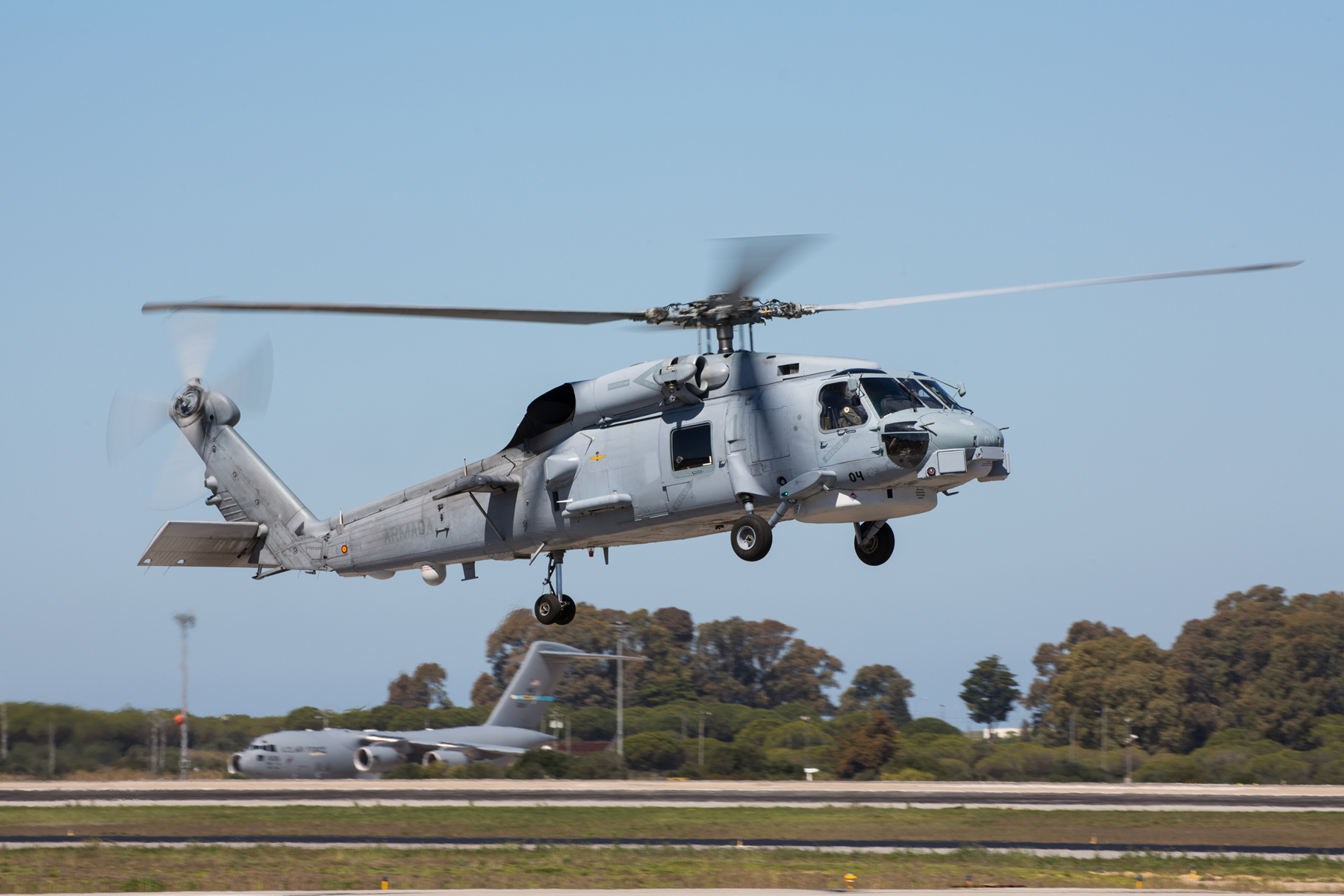
When the helicopters were accepted by FLOAN, the participating pilots from Escuadrilla 003 trained three instructor pilots which are now training the remaining pilots. Lt. Ramon Lacave Lena explains that the squadron is currently in transition of getting familiar with the new layout in the cockpit and this is taking up most of the time of the squadron. The next step will be the training program for night missions in which the crews will be trained in operating with night vision goggles (NVG’s). Currently four instructors have been NVG trained and are currently instructing other pilots. Two of these four instructors received their training in the US and the other two in Spain. Since the squadron is still in full process of conversion the status of the squadron is not yet at initial operational capability, but remains temporary in conversion training status.
Full operational capability is expected in the course of 2017 but the exact certification date is unknown and will not be acquired after all seven helicopters within the squadron have passed their modernization program.
“Same cat new tricks”
During the modernization program the AB212’s were equipped with new avionics, an infrared turret, and a mission computer including a moving map. Although the appearance of the helicopter has significantly changed, the type distinction remained the same: AB212.
The large variety of conventional instruments, analogue displays and gauges has been reduced to four digital displays on which all relevant information is presented. This includes information concerning all relevant tactical systems. The upgraded radar as well as a Wescam 10 infrared turret and camera are all connected to a sophisticated mission computer which is able to integrate and link all the acquired information in a presentable way. This new feature provides the crew with enhanced flight information, tactical information presented on a moving map on one of the four displays. This provides the crew with an increased situational awareness. The system is still in development and the crew is training continuously on a daily basis to get familiar with the new features.
The entire electrical wiring was exchanged. Moreover the helicopter was equipped with an ICE system which is an automatic identification system able to identify naval vessels kind of similar of an identification friend of foe (IFF). Besides IFF the helicopter also has an integrated missile approach warning system.

A self-defense chaff and flare system is not integrated yet, but might be during a next modernization step. During the current modernization a Bilon 7.62caliber mini-gun is integrated. This weapon is still in the process of certification on the AB212. This mini-gun replaces the older MG14 German manufactured gun. The conventional 2.75 inch rocket launcher pods used for unguided missiles deployment that used to be fitted on the AB212 are deemed obsolete after the modernization program and have been removed from the helicopter. In order to increase the ballistic protection for the crew, a removable kevlar coating is applied on the inside of the airframe. This increases the protection of the crew for small arms fire up to 7.62 mm.
High on the desired list of the squadron was an improved power plant, but was not awarded during this modernization program. The main engine is strong enough and is able to supply 1800 horsepower. The limitation however is the transmission box that is only able to support 1280 horsepower.
With the completion of the current modernization program the “Gato” is intended to stay in operational service with FLOAN until at least 2025.
“skulking abroad”
Escuadrilla 003 has an impressive record when it comes to foreign deployments. It participated in anti-terrorist operation ENDURING FREEDOM in the Red Sea and Persian Gulf in 2002. Also it flew combat operations during Operation ROMEO SIERRA, in the Perejil Island conflict. The squadron also aided during Operation Iraqi Freedom in Iraq during 2003. The year 2004 proved to be a an even busier year for Escuadrilla 003 when the squadron was appointed to assist during Operation Mar Caribe in Haiti, Operation Romeo Mike after the March 11th terrorist attacks in Spain and surveillance operation Strong Escort in the Strait of Gibraltar 2004.
In 2005 the squadron provided humanitarian aid during Operation SOLIDARITY RESPONSE in Indonesia in the aftermath of the 2005 tsunami. A similar mission was conducted during operation HISPANIOLA after the 2010 earthquake in Haiti. The squadron participated in the UN mission in Lebanon between 2011 and 2012 and also participated in Operation SOFIA recently in Somalia, an anti-piracy mission providing maritime interdiction security, and Lacave explains that the same mission was carried out only recently during a deployment from a ship in Libya. The squadron has also been patrolling the Syrian refugee situation. They didn’t so much take part in actual search and rescue missions, but acted as an early warning advice platform.
Squadron-exchanges have taken place with the Italian Air Force. In order to share information and gain experience, the squadron planned a squadron-exchange with the Italian Navy AB212 squadron. The Italian Navy AB212’s operated from B.N. Rota for approx. 10 days last summer. The main purpose of this exchange was to share information concerning the operational capabilities. The current modernization however is too specific which makes it nearly impossible to exchange experiences with their NATO partners.
“Sacred Cows”
The oldest helicopter within the inventory of today’s Spanish Naval Air Force is operating in Escuadrilla 005. The squadron still operates the SH-3 Sea King since the day the squadron was formed 50 years ago. It is quite unique that a squadron only operates one type of aircraft during 50 years of existence.
The squadron was formed in 1966, when it received its very first Sea King. This specific airframe is still in operational service today. This helicopter referred to as MORSA 501 was embarked on board of the American carrier USS Independence and flew from that carrier to NAS Rota on 29 June 1966. In that same year five additional SH-3G’s were delivered and another six were delivered to the squadron in 1967. Two additional helicopters were acquired in 1972 and four more were delivered in 1974. By the early 1980’s a total of 18 Sea Kings were delivered to the Spanish Navy. The last delivered SH-3 was also the last SH-3 to roll out of the assembly line and was delivered to the squadron. During 50 years of operations seven helicopters were lost due to accidents, costing the lives of 9 crewmembers. One SH-3 is preserved near the NAS Rota control tower, bringing the total of operational helicopters within the inventory of Escuadrilla 005 currently at over10 helicopters.

The SH-3 has a four person crew, a pilot and a co-pilot, a load master and load master assistant. The load master and assistant load master operate the FLIR. They also provide indications when landing on rough terrain. The standard minimal required crew is 3 persons. Preferred however is a crew of four, but is dependent on the specific mission. On average every pilot logs approx. 160 and 200 hours annually.
Although the Sea King is the oldest helicopter within the inventory, it still plays a vital role within the naval air operations. Lt. Jorge Lens explains that the Sea King is kind off unique since the number of helicopters that are capable to carry 15 persons in full equipment are limited. As a comparison, for the same transport two SH-60 Seahawks would be required.
The main role of the Sea King is the transport of troops from amphibious vessels to their intended destination. A number of Sea Kings however were modified and equipped with anti-submarine warfare (ASW) and airborne early warning capabilities. The Spanish Navy decided to modify these three helicopters with AEW equipment in order to be able to better protect the Carrier Combat Group. Additionally a “search water” radar was integrated. This radar was manufactured by the British company Thorn Emi Electronics Ltd and was selected from a wide variety of alternatives. Important in the selection was the positive experience of the Royal Navy’s AEW Sea Kings during the Falklands War. Three systems were acquired and integrated in the helicopters. A fourth unit was installed in a container was used as test bench and simulator. In their AEW configuration, the SH-3’s could also operate as target reporting unit (TRU) and function as an aircraft controller taking part in strike missions.
“Cow-stripping”
In 2001 however, the appointed mission of Escuadrilla 005 was altered and limited by abandoning the ASW task. The ASW configured helicopters were converted back into amphibious transport helicopters for troops and logistic transport, vertical replenishment, vertical on board delivery (VOD), search and rescue (SAR) and surface search missions. These tasks remained the units main mission until 2015 when the last AEW configured SH-3 was taken to the hangar to remove the AEW equipment. No other helicopter took over the AEW capability.. Since the existing technology as integrated in the SH-3 was aging and took a lot of effort in maintaining to keep the systems running at higher costs. This just might be the reason why the Spanish Navy decided to abandon this capability.
“Extending the cows tail”
The main tasks currently appointed to Escuadrilla 005 is troop transportation, from amphibious ships to their destination, search and rescue (SAR), medical evacuation (MEDEVAC), aircraft control and surface warfare. In some cases the helicopters are also used for surveillance flights doing visual reconnaissance. Since five years the special operations missions were added to the tasks of the squadron including covert troop insertion during special operations.
NATO developed a new program in which an air operations section had to be integrated in their joint special operation missions combined with ground maritime special operations and is referred to as the ADP program. This air operations section is formed by several participating nations each performing their specific role in a joint operation.
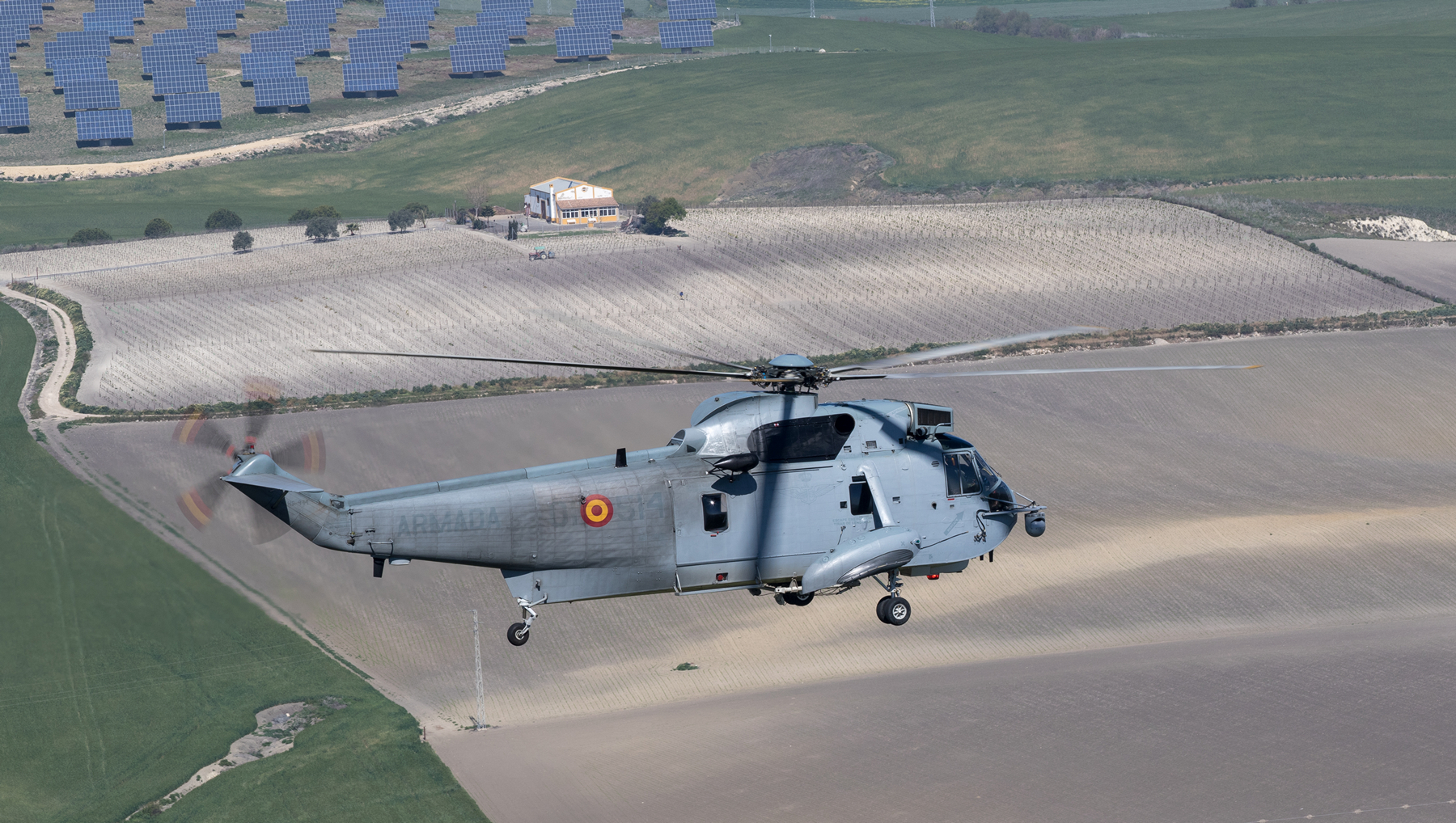
The SH-3 is extremely suitable to conduct the special operation tasks both during day- and nighttime because of the transport capabilities of the helicopter Lt. Jorge Lens further comments. Sure the helicopter is aging and may lack a bit of speed. Instead of the desired 150 knots, the helicopter does reach only 110-120 knots, but there just aren’t that much helicopters around able to carry 15 persons in full gear for a duration of 3 hours, and has low level capabilities over land and sea.
Since the helicopter has limited self-defense capabilities equipped with a sole 7.62 mm minigun, the helicopter is usually escorted by a gunship providing close air support (CAS) during these special operation missions. Lt. Lens comments that although the airframe is aging, the helicopter shows no limitations to the airframe and capabilities and is still able to perform according to the specified mission envelope. The SH-3 is also capable to operate during night time missions such as night insertions over sea, fast roping insertions during night time. For this purpose the Helicopters are equipped with the Wescam 15 system and enables the helicopter to conduct fast roping at 150 feet above sea level using the NVG’s.
Furthermore after missions over the sea an SH-60 has to be washed down to remove the corroding salt, but an SH-3 does not have to be cleaned. Since the SH-3 has a particle separator they do not experience turbine problems caused by the salt corroding the moving parts. Only when performing missions below 30 feet above sea level they do clean the helicopter to prevent the antenna’s and Doppler system from corroding.
The SH-3 can also operate as a medivac platform since it can be fitted with an air ambulance unit. This capability is trained on a regular basis with both civilian organizations as well as the other braches within the Spanish armed forces.
The biggest disadvantage of the Helicopter is that it is given its size it is unable to land at most of the vessels within the inventory of the Spanish Navy and does not fit in the integrated hangars. The Sea King is not fit to land on water surfaces since the required seals have not been integrated.
Last but not least Lt. Jorge Lens explains that the SH-3 is an extremely suitable helicopter to perform advanced helicopter flying training.
“Keeping the cows alive”
Lt. Jorge Lens who has been with the squadron for 8 years and has 1450 hours on the SH-3 explains that maintaining the existing inventory of ten Sea Kings is a challenge. Both maintenance and overhauls are performed at Rota. Since the number of Sea King operators is decreasing. the production of new spare parts is limited and the squadron has to find alternative ways to obtain the required spare parts.
In their efforts to obtain these parts the Navy purchased a total of 5 SH-3 Sea Kings from the 309th Aerospace Maintenance and Regeneration Group (AMARG) aircraft storage facility located at Davis Monthan Air Force Base to use these helicopters as platform for spare parts. The main requirement in spare parts are the rotor blades and parts necessary for the transmission. Since the configuration is slightly different, not all parts of these helicopters can be used though and the maintenance department has to be very creative in acquiring the specific parts.
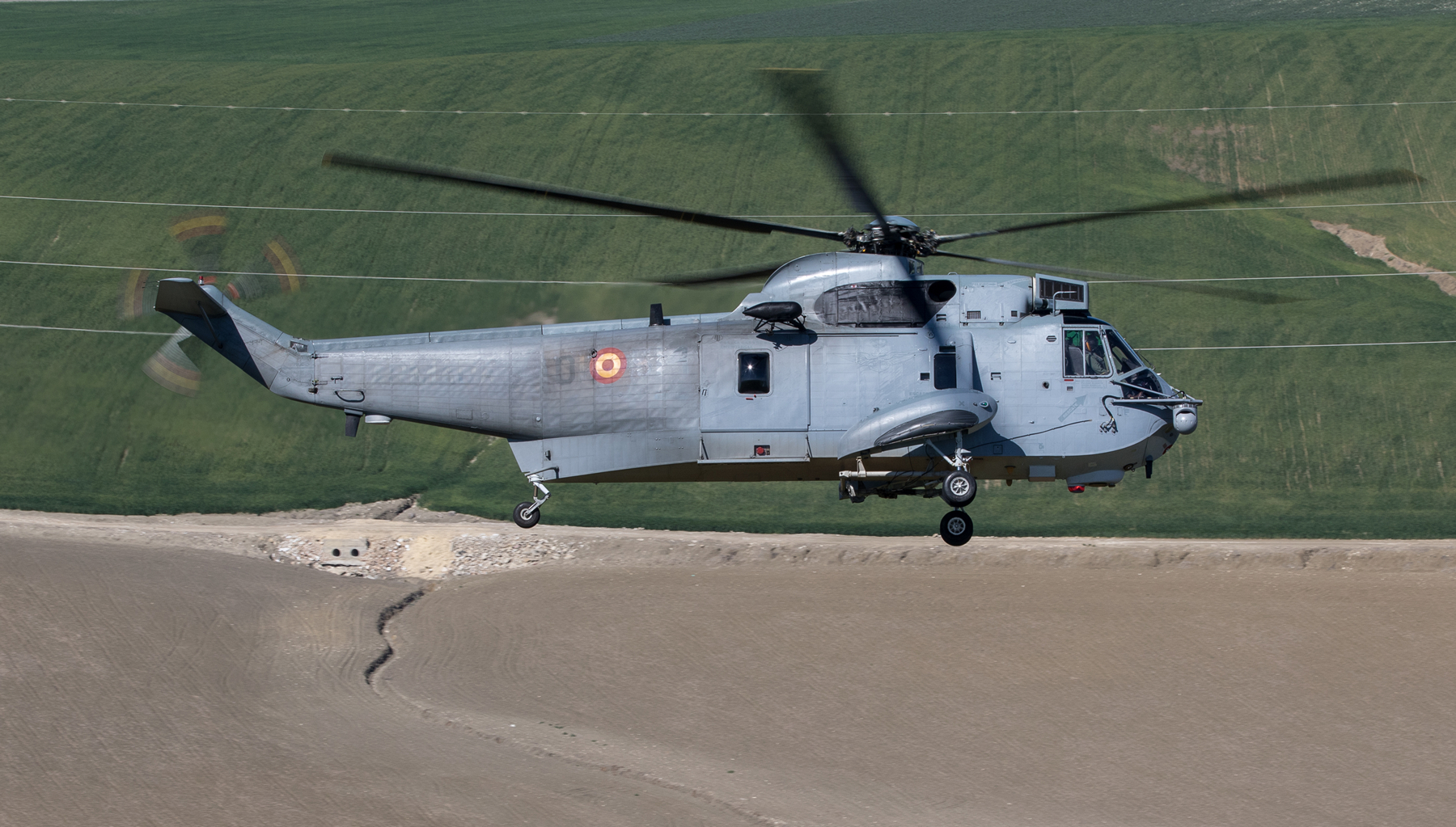
Besides parts, simulator capabilities for training purposes are now limited as well. The crews used to go to the United States and Australia for simulator training. However with the withdrawal from use from the Sea King within the inventories of the United States Navy and the Royal Australian Navy, the simulator programs have ceased and the simulators were deactivated. This forced Escuadrilla 005 to look for alternatives. Doing so they established cooperation with the Canadian Air Force in order to use their simulator. There were two other alternatives considered. One alternative was the German Navy simulator. But their configuration showed too many deviations from the configuration used by the Spanish Navy. The second alternative was found in the United Kingdom but simulator time costs exceeded the expectations of the Spanish Navy. Also recently Sea king operations in the UK ceased and the simulator program was abandoned as a result. The decision was made to continue simulator training in Canada in the future for as long as simulator training is available.
With both simulator resources and required spare parts being scarce, the question arises if the Sea King needs to be modified or replaced in the near future. Given its unique capabilities finding a replacement will not be an easy task. The current long term plan is to replace the SH3 with the NH90 Maritime Tactical Transport Troop which are expected to arrive from 2025 onwards.
In the interim, the Spanish Navy is acquiring some USN SH60F form Excess Defense Articles, which will be transformed to the tactical transport troop role.
“Achievements”
Escuadrilla 005 participated in a number of international missions during the last decade. The squadron participated in Operation Enduring Freedom and participated in the mission where the North Korean ship “Soan” was intercepted and boarded. It was then established that the ship was smuggling missiles to the Sadam Hussain government. In 2003 the unit was deployed to Iraq for 4 months. In September 2006 the squadron was deployed to Lebanon to participate in a UN mission, and in 2008 the SH-3’s performed MEDEVAC operations over Bosnia-Herzegovina. From 2010 forward two helicopters have been participating in the anti-piracy operation “Atalanta”. The squadron will return to Somalia later this year, providing one helicopter will fly missions from the Spanish Naval vessel “Sofia”. Later this year the squadron will also participate in the exercise SOFEX which will be held in Carthara performing mountain training in the Pyrenees.
“Argo’s”
The training squadron of the Spanish Naval Air Forces rotary wing is Escuadrilla 006.
The FLOAN is the sole operator of the Hughes 500 Helicopters within NATO. The first batch of five Hughes 500 helicopters was acquired in April 1972 and were appointed to the Spanish Naval Air Forces and based at NAS Rota. The Spanish Navy referred to the helicopters as Hughes 500M ASW nicknamed “Argo”. With the arrival of the helicopters Sexta Escuadrilla was formed on 15 May 1972.
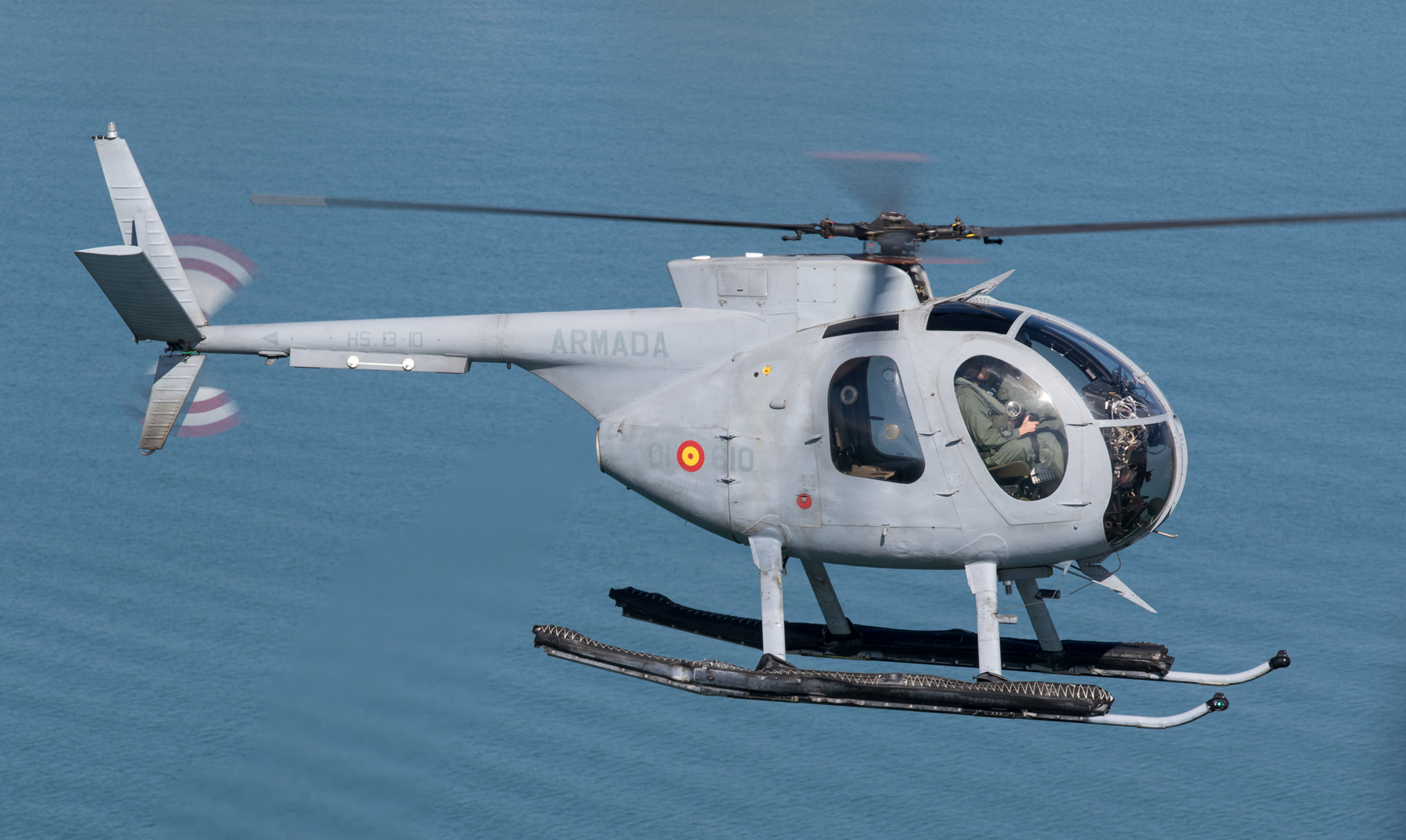
All five helicopters were appointed to equip the five US supplied “Churruca”-class destroyers and the two Spanish built Roger Lauria Class destroyers with light anti-submarine warfare (ASW) helicopters. For this purpose the helicopters were fitted with floats on their skids and torpedo launchers. Soon after the delivery of the initial five helicopters another batch of 9 helicopters were delivered to Escuadrilla 006. Three additional Argo’s were delivered in January 1974 and another four were delivered in April 1974. The last two were delivered in July 1976 and July 1977. By 1977 the squadron had 14 helicopters at its disposal. The helicopters were painted in a dark grey color schems and were provided with white high visibility markings.
With the arrival of newer AB-212 helicopters and the decommissioning of the five “Churruca”-class destroyers the role of the H500’s changed. Since the newer helicopters were better fitted to perform the ASW role the H500MM’s were initially used for training and SAR purposes. (deze zin loopt niet helemaal, ik snap hem niet, misschien in twe stukken hakken? )Later the SAR task was transferred to other squadrons and the main task of Sexta Escuadrilla was training of new pilots. Besides this training task the squadron also fulfils certain type of auxiliary missions and low intensity operations, like SAR and air surveillance, a platform of forward air controllers, light reconnaissance and intelligence gathering.

Of the initial batch of five helicopters, three were lost during the operational lifetime and two additional Argo’s were lost of the second batch, leaving the squadron with 9 nine operational helicopters.
The naval helicopter training program is built up in three stages. In the first stage the cadet will be trained at the Air Force academy at Armilla – Granada in basic flying training. This training stage will take 3 months and the pilot has to perform 50 hours in the single-engined EC-120 Colibri helicopter.
During the second stage the cadet will receive advanced flight training at the same facility. This stage will also take 3 months and another 50 hours have to be performed on the Sikorsky S-76. During this stage the cadet is being trained in instrumental flying.
After these 2 stages have been completed the pilots transfer to Rota to commence with the third stage of their training. This training is being carried out by Sexta Escuadrilla and the main purpose of this stage is to prepare the cadet for all specific aspects of naval flight operations, like landing on the deck of a naval vessel.
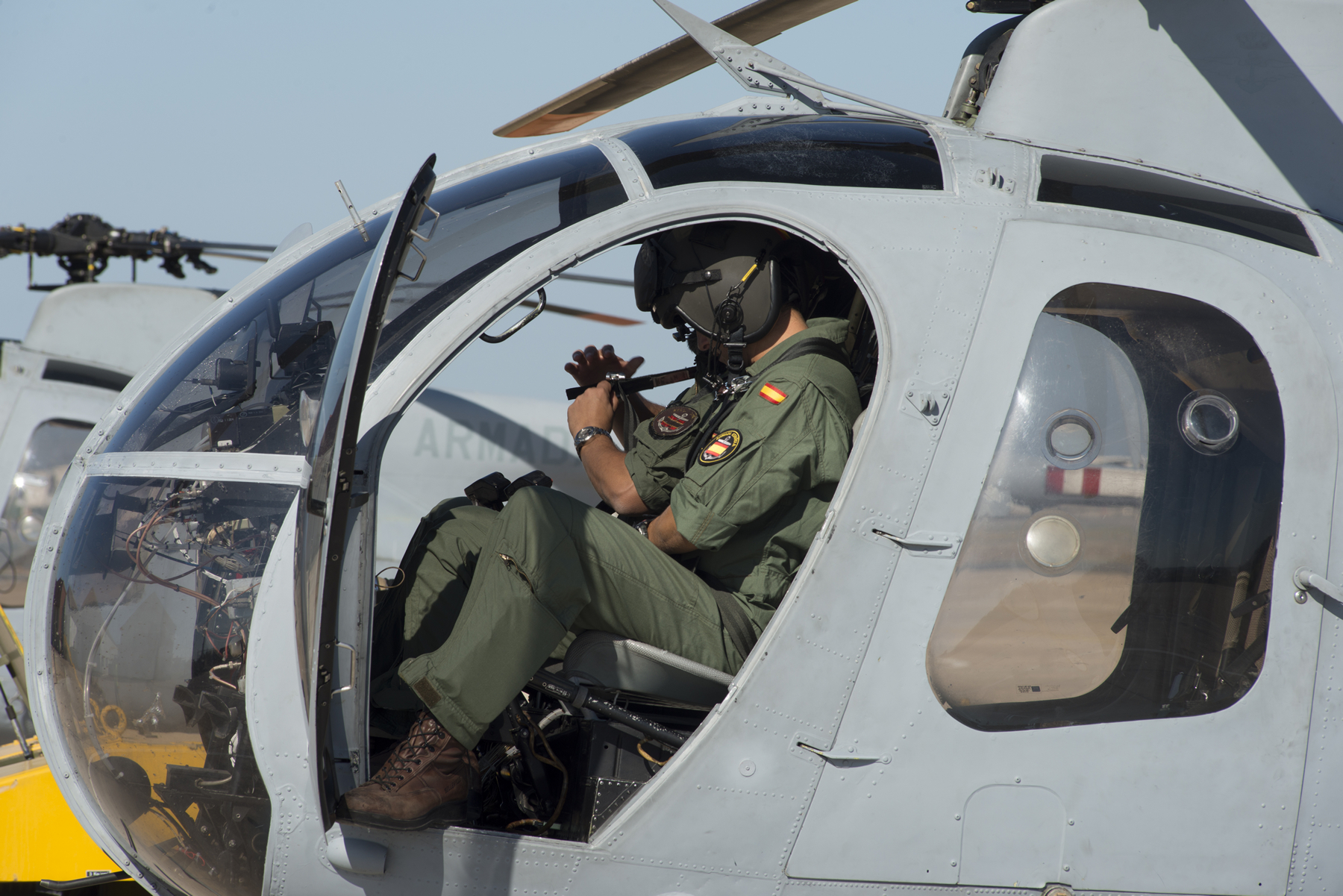
For this purpose the squadron has the disposal of six remaining and recently modernized H500MHM’s and 5 instructors. These instructors are extremely experienced pilots. Lt. Ignacio Bescos Roldan stated he logged 2100 flight hours on the type since he choose to be an instructor on the Argo. His collegue instructor Lt. Jezus Antonio Escudero Campillo even logged 3200 hours on the Argo.
Once the cadet has completed his 9 month training program he will either be transferred to one of the operational naval helicopter squadrons to be further trained in the specific role of the helicopter and the squadron. These squadrons are Escuadrilla 003 operating the AB-212ASW, Escuadrilla 005 operating the SH-3H or Escuadrilla 010 operating the SH-60. Annually the Sexta Escuadrilla trains approximately three to six new pilots for the operational helicopter squadrons.
“Modernization program”
Although the helicopters had already been in service since 1972 the FLOAN choose to modernize six of the nine remaining Argo’s. The purpose was to prolong the operational lifetime of the helicopters by 5-10 years. After an extensive modernization program carried out by the company INDRA six of the Argo’s are still active. The remaining three Argo’s have been withdrawn from use and serve as a source for spare parts.
During the modernization program that started in September 2012 and lasted until February 2015 the helicopters were refurbished passing an extensive process of renovations of avionics. This included the improvements of the communication system by the implementation of VHF omnidirectional range and ranging (VOR) an integrated landing system (ILS), the integration of a new Garmin GTN750 global positioning system (GPS) system positioned on the left hand side of the pilot. Included was also a primary flight display that shows the pilot all the information of the electronic flight instrument system (EFIS). The Helicopters also received a new paint coat. The dark grey has been abandoned and the helicopters were painted in the standard naval grey camouflage scheme and are provided with low visibility markings.
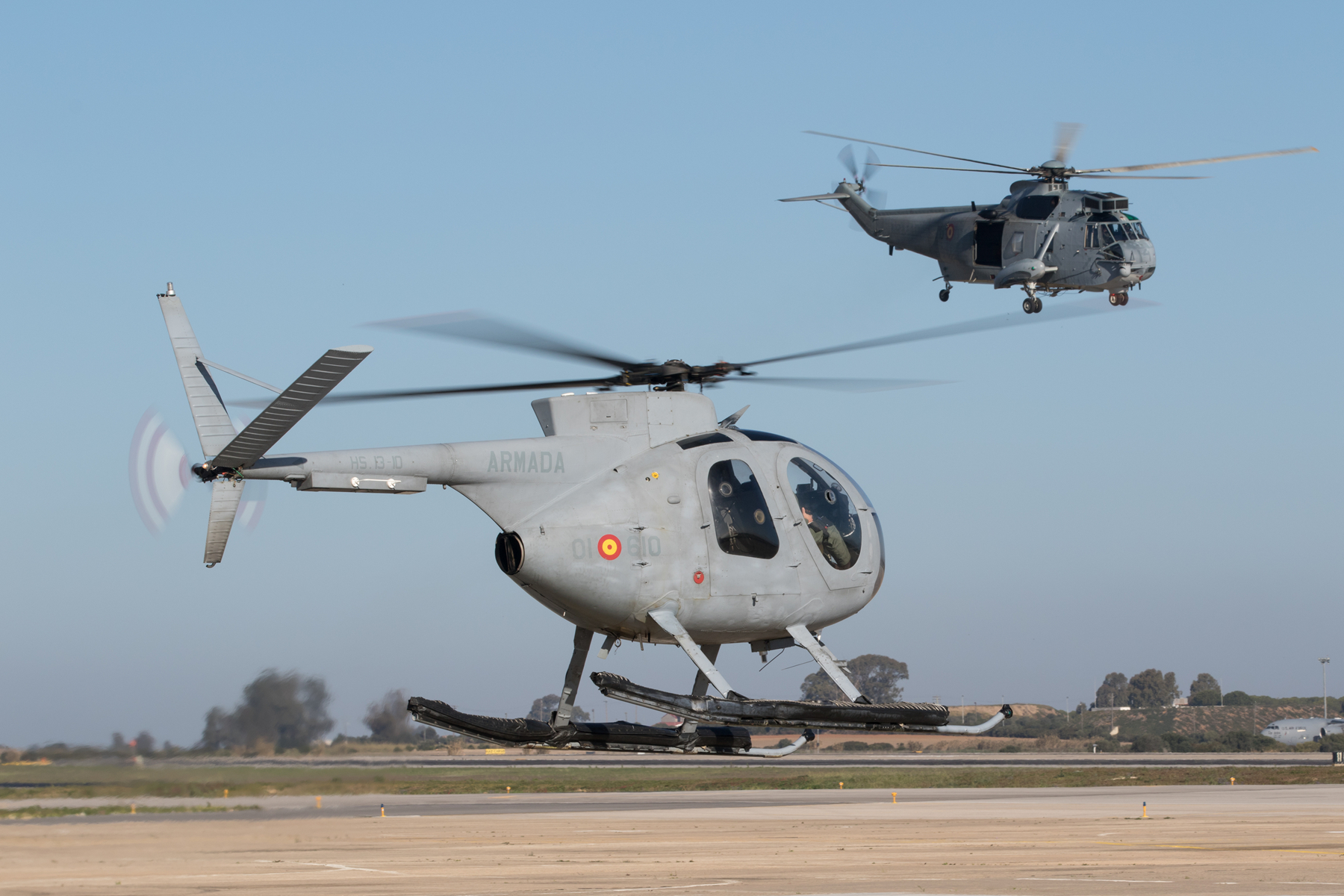
Although the Argo’s are at the end of their operational lifetime, Sexta Squadrons continues performing their training task, awaiting the future replacement program in order to enhance their training capabilities and current operational capabilities.
Besides the training tasks Escuadrilla 006 fulfills a number of secondary missions such as logistics, surveillance, support the Marine Corps, carrying out infiltration of special troops and function as platform for forward air controller (FAC), zone reconnaissance and intelligence gathering.
During maritime mission the Argo’s can function as embarked air unit aboard base communication center (BCCA), carry out vertical replenishment supply (VERTREP) on deck of ships and transport both material and personnel between ships or between ships and land. More tasks are observation and correction of naval gunfire, transfer of patients in mission (MEDEVAC), as advanced observation in a curtain surface warfare.
“Seahawks”
The fourth rotary squadron in the Spanish Navy is Escuadrilla 010. This unit is equipped with the latest acquired helicopter type within the inventory , the SH-60B Block 1 Core B. The squadron and has 12 of these helicopters to its disposal.
The first batch of SH-60B’s was acquired in 1988 and a second follow up batch of another 6 SH-60B’s was purchased via the foreign military sales (FMS) program in 2002. During that same year the initial 6 SH-60B’s were upgraded in order to bring the equipment and integrated systems up to the same technological standard as the SH-60B’s delivered in the second batch. The upgraded version is referred to as the SH-60B Block 1 Core B standard.
The squadron is designated as a Light Airborne Multipurpose Squadron (LAMPS), which means the configuration of the helicopters can be adjusted to the specific mission requirements. The helicopters function as a real time link between the helicopter and the Naval Vessel, meaning the sensors that are integrated in the helicopters configuration function as a forward airborne of the Naval Vessels combat and information center.

Given the versatility of the multi-purpose helicopter it has a very wide range of capabilities. In other words the helicopter can be configured on the specific demands of the mission and therefor can adapt to each individual role. Currently the tasks appointed to Escuadrilla 010 are surface warfare (SUW), undersea warfare (USW), search and rescue (SAR), medical evacuation (MEDEVAC), logistic vertical replenishment (VERTREP) and vertical on board delivery (VOD), communications relay (COMREY) and naval surface fire support (NSFS).
The SH-60B’s were acquired in order to operate from the Santa Mariá and Álvaro de Bazán class Naval vessels. Whenever a ship is deployed to sea typically a SH-60B will be embarked, which means that before a ship heads to sea, the SH-60 is prepared and configured at Rota for its specific role during the deployment. While In Rota Naval Base, the helicopters are continuously maintained and the pilots are trained to keep the fleet in full readiness.
Besides deployments to sea Escuadrilla 010 also deploys ashore for exercises with the Marine Corps and other military services during the joint exercises.
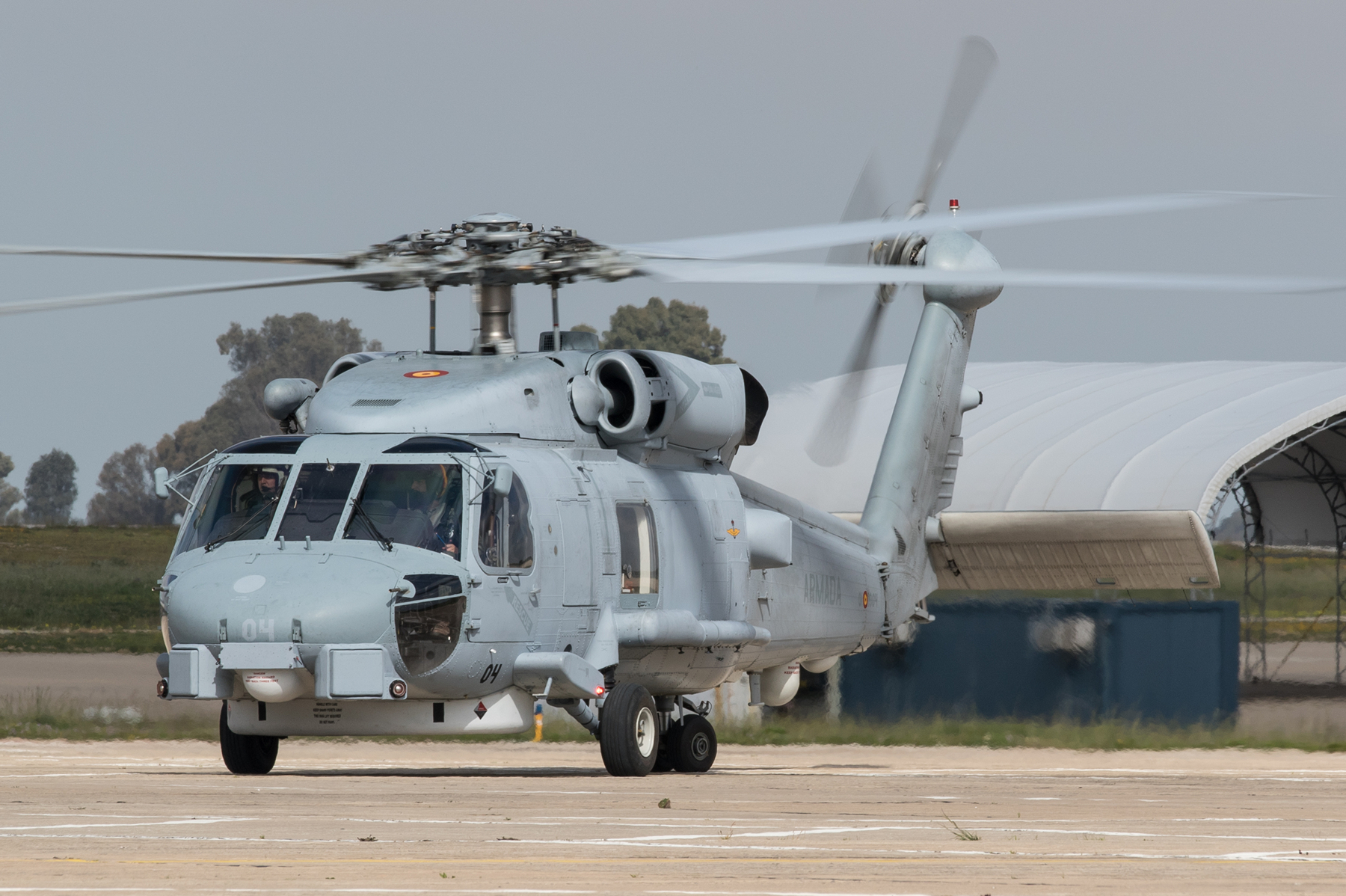
The last few years, the squadron has permanently deployed two helicopters in the Indian Ocean including a 20-strong detachment as part of the endeavours to fight piracy in the area. Since its establishment, this helicopter squadron has participated in nearly all Spanish Navy operations all over the world. To name but a few: operation Enduring Freedom in the fight against international terrorism; the deployment in Lebanon; the war in Iraq integrated into the USS “Theodore Roosevelt” Carrier Group; standing NATO naval groups in the Atlantic and Mediterranean sea and –more recently– participation in the multinational coalition in Libya.
At present, units from the 10th Squadron regularly take part in the counter-piracy operation Atalanta in the Indian Ocean on board the different Spanish Navy warships deployed in the area.
“A bigger flock”
Currently the squadron is preparing for another deployment in Somalia which means that a relative high number of helicopters are in maintenance. One helicopter will be provided to the upcoming mission and during this mission the helicopter will deploy from a Spanish Naval vessel.
Recently the Spanish Navy acquired two SH-60F helicopters which can be categorized as an SH-60B+. According to speculations the Spanish Navy aims to aquire 4 – 6 SH-60F’s. It is not been specified if all the SH-60F’s will be assigned to 10 Escuadrilla or if they will be assigned to another squadron. This will depend mostly on the specified task of the helicopters. Initial deliveries of the SH-60F’s are expected this summer. Transition training and preliminary stages on how to employ the helicopter should be completed by the end of 2016.
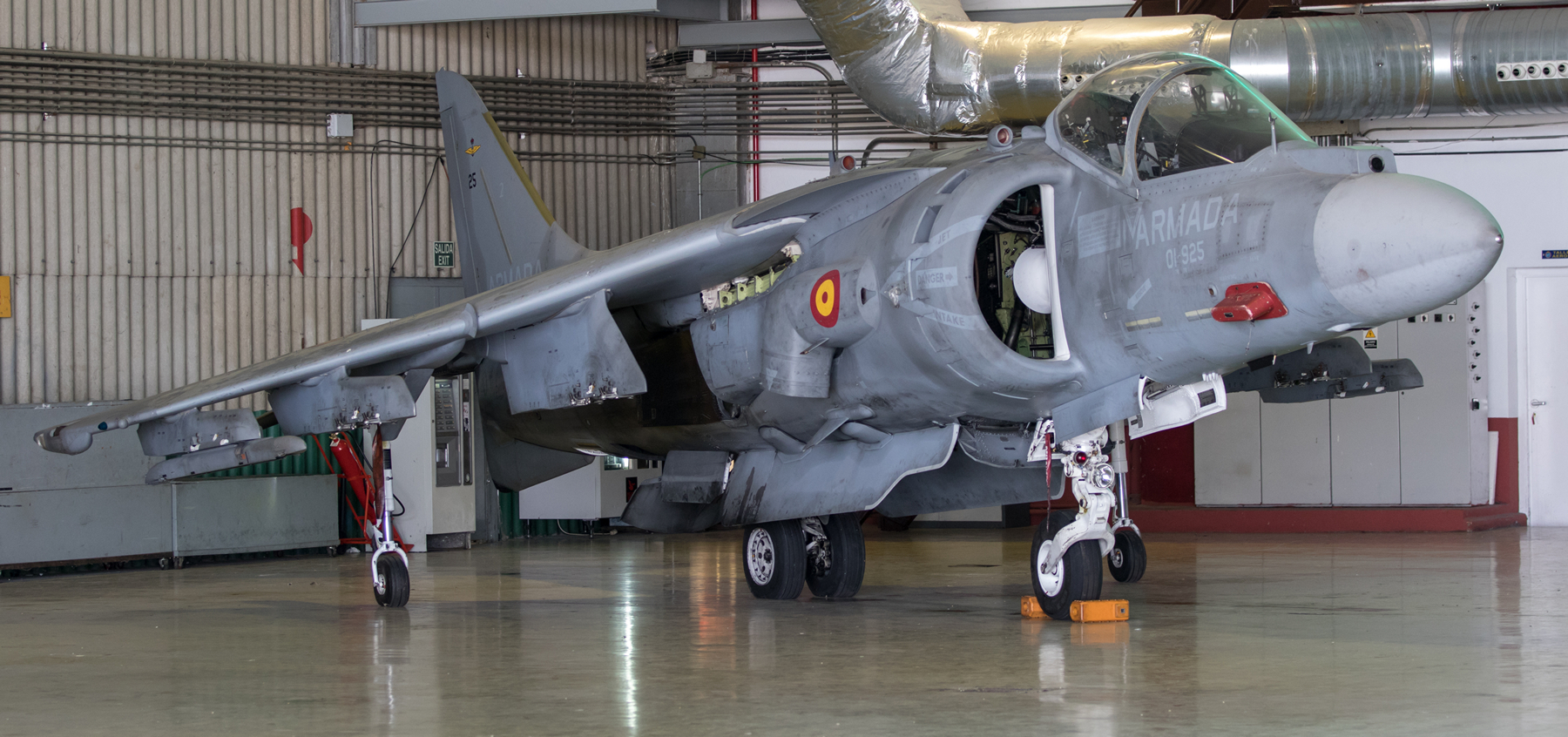
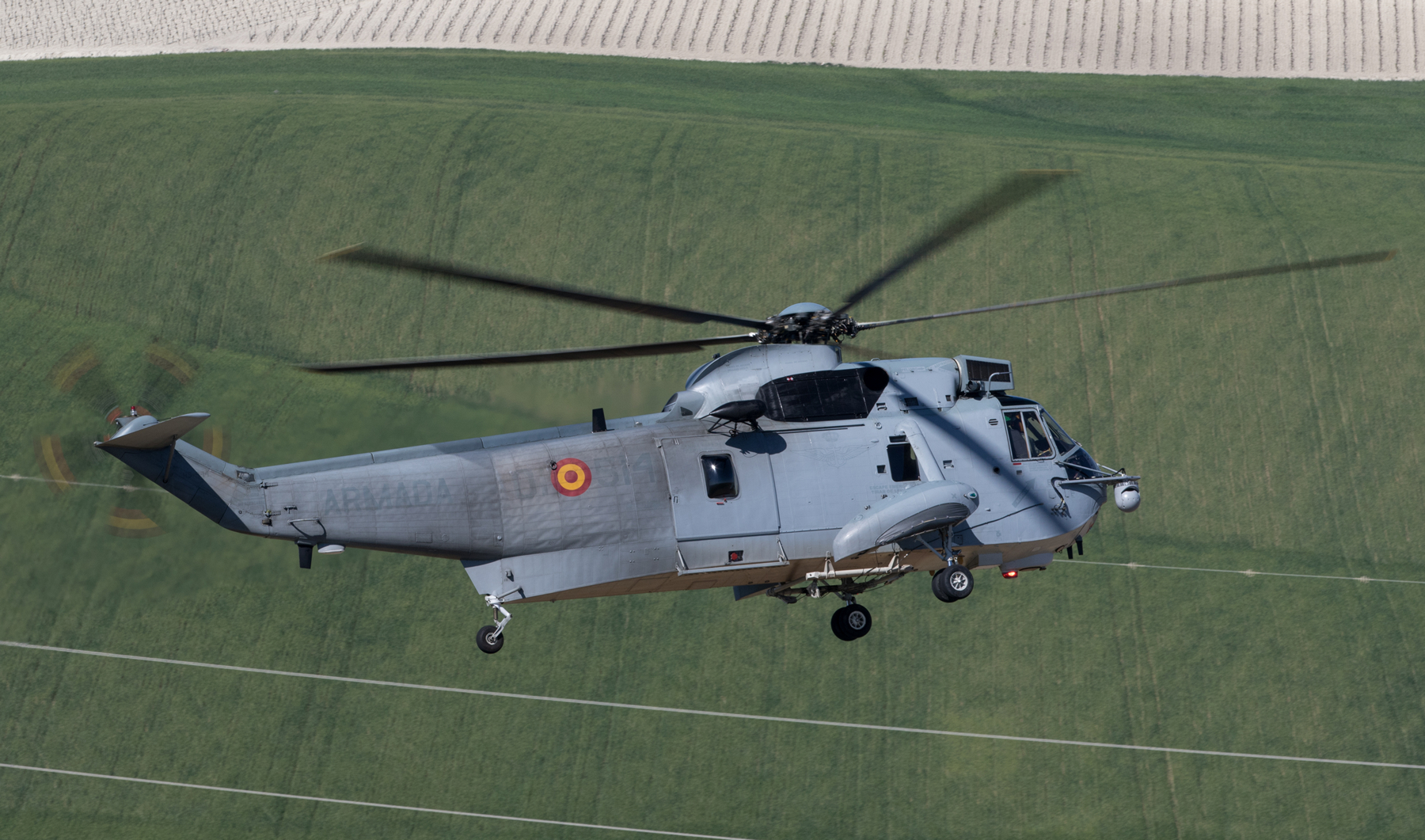
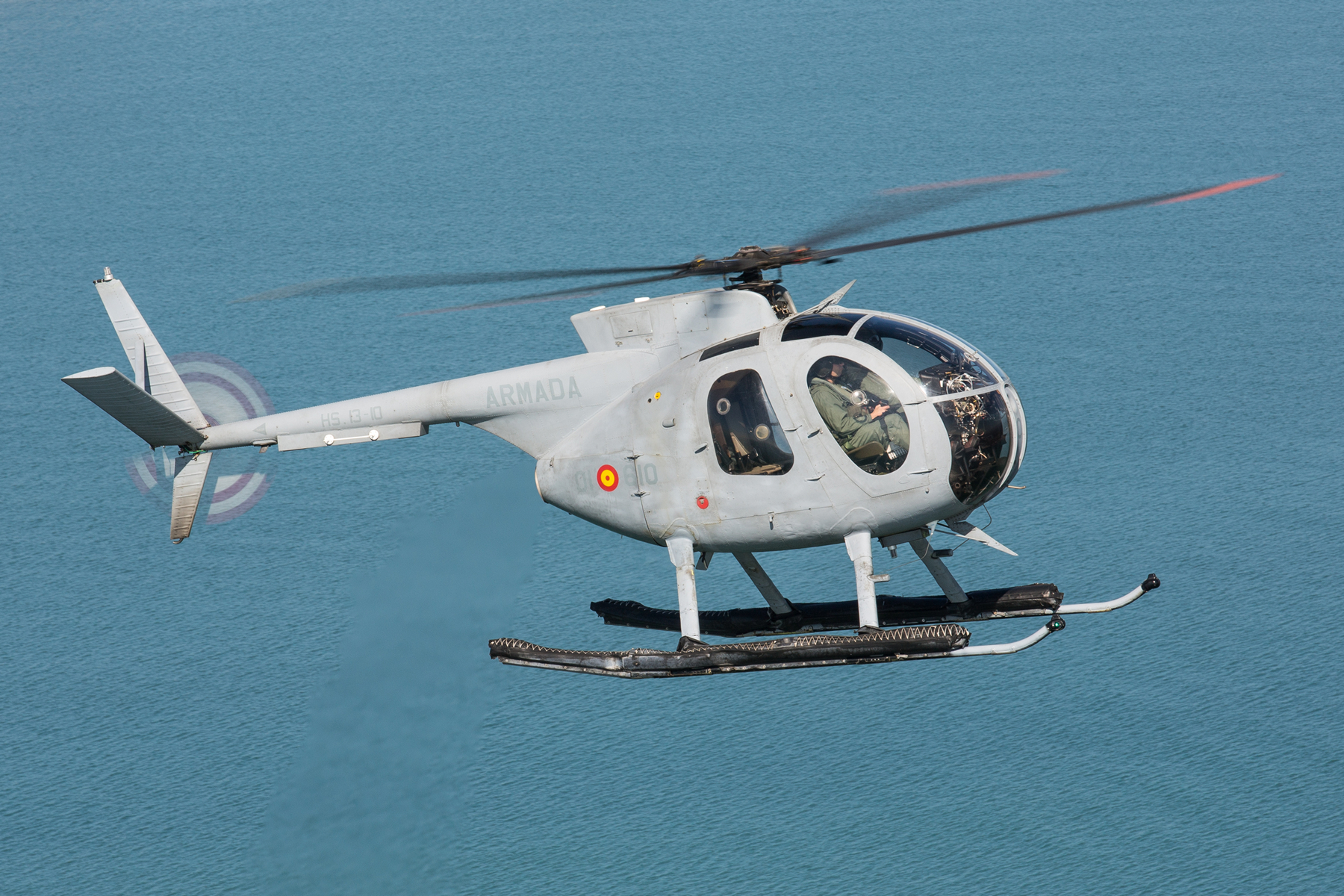
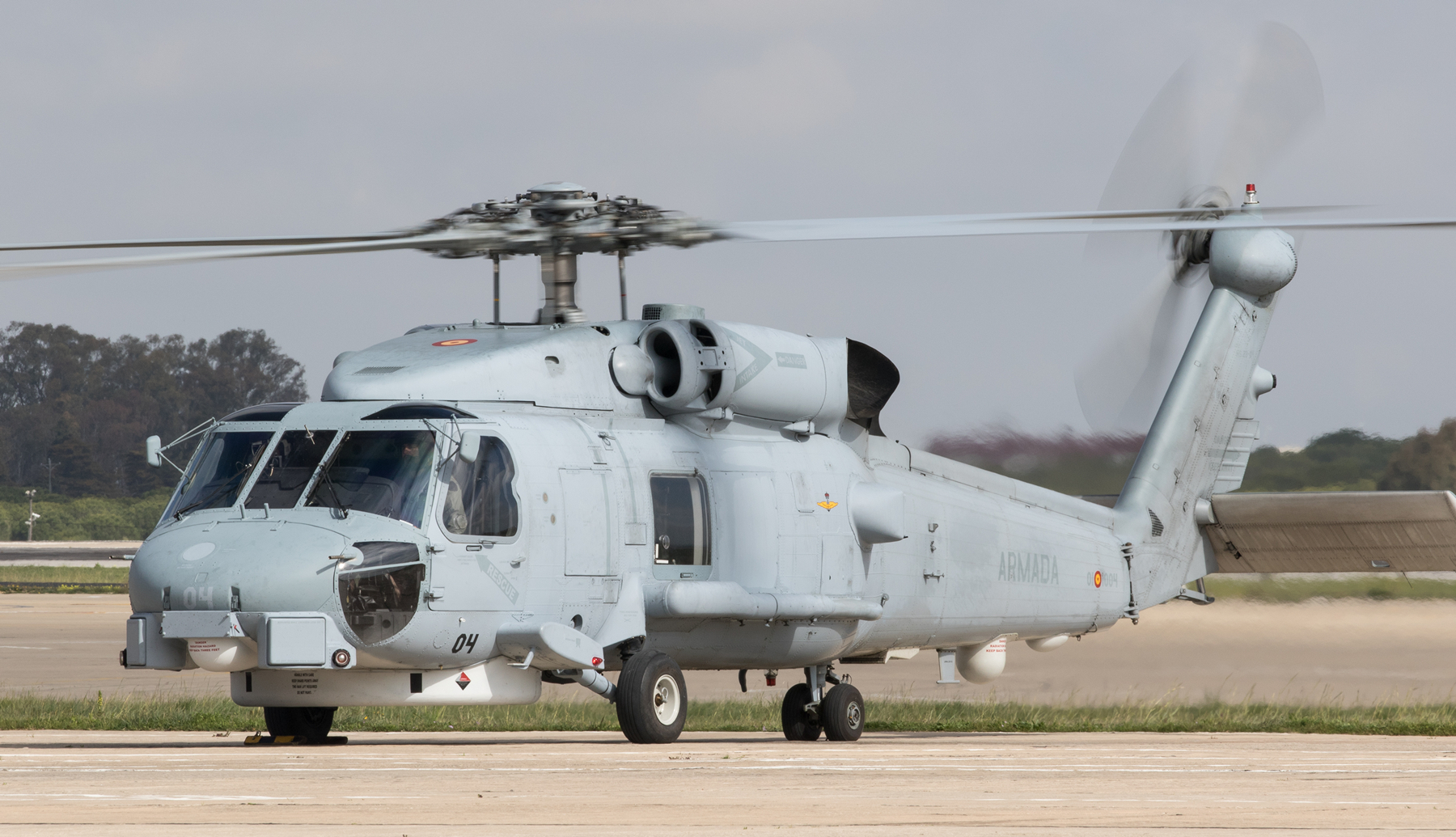
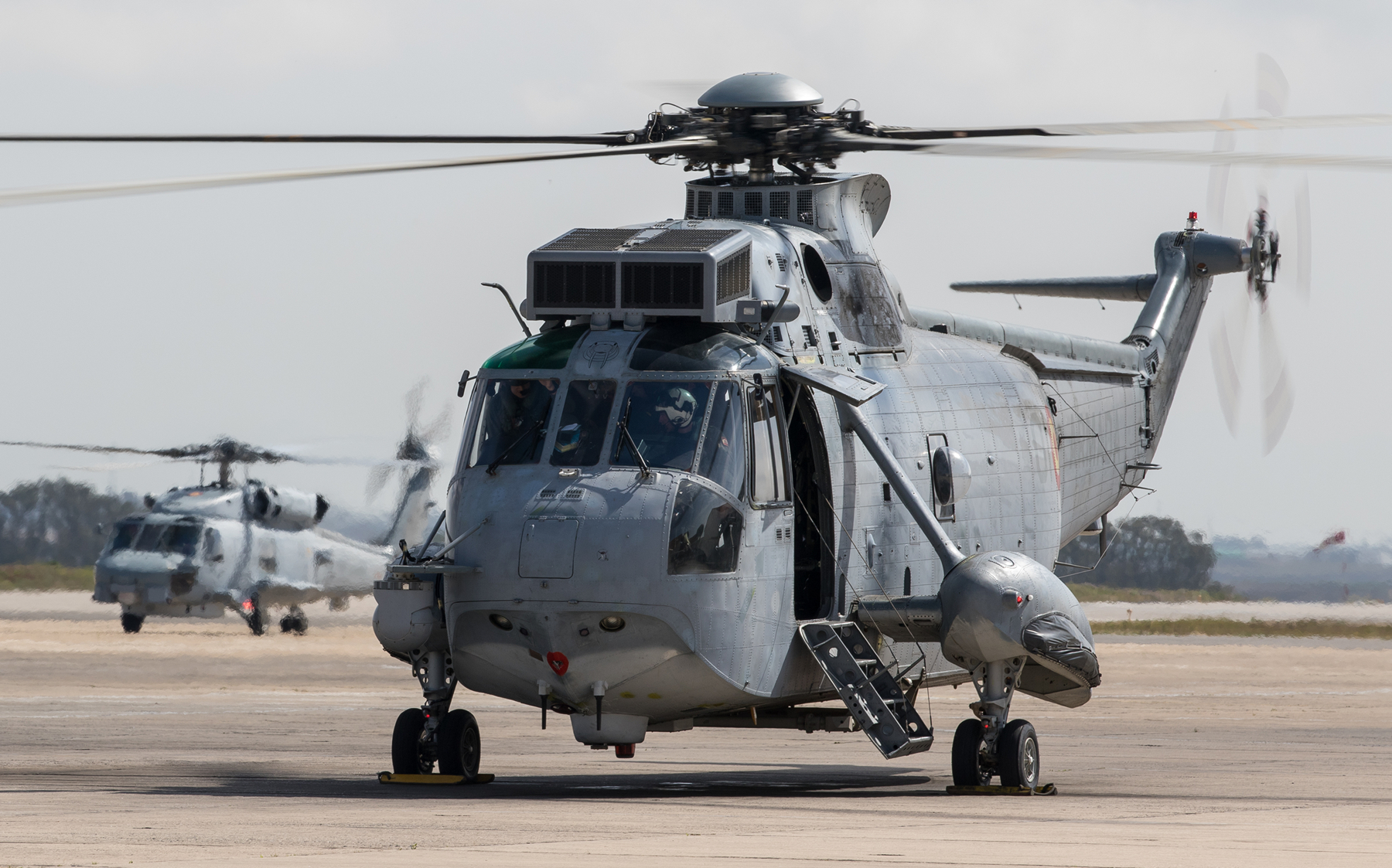
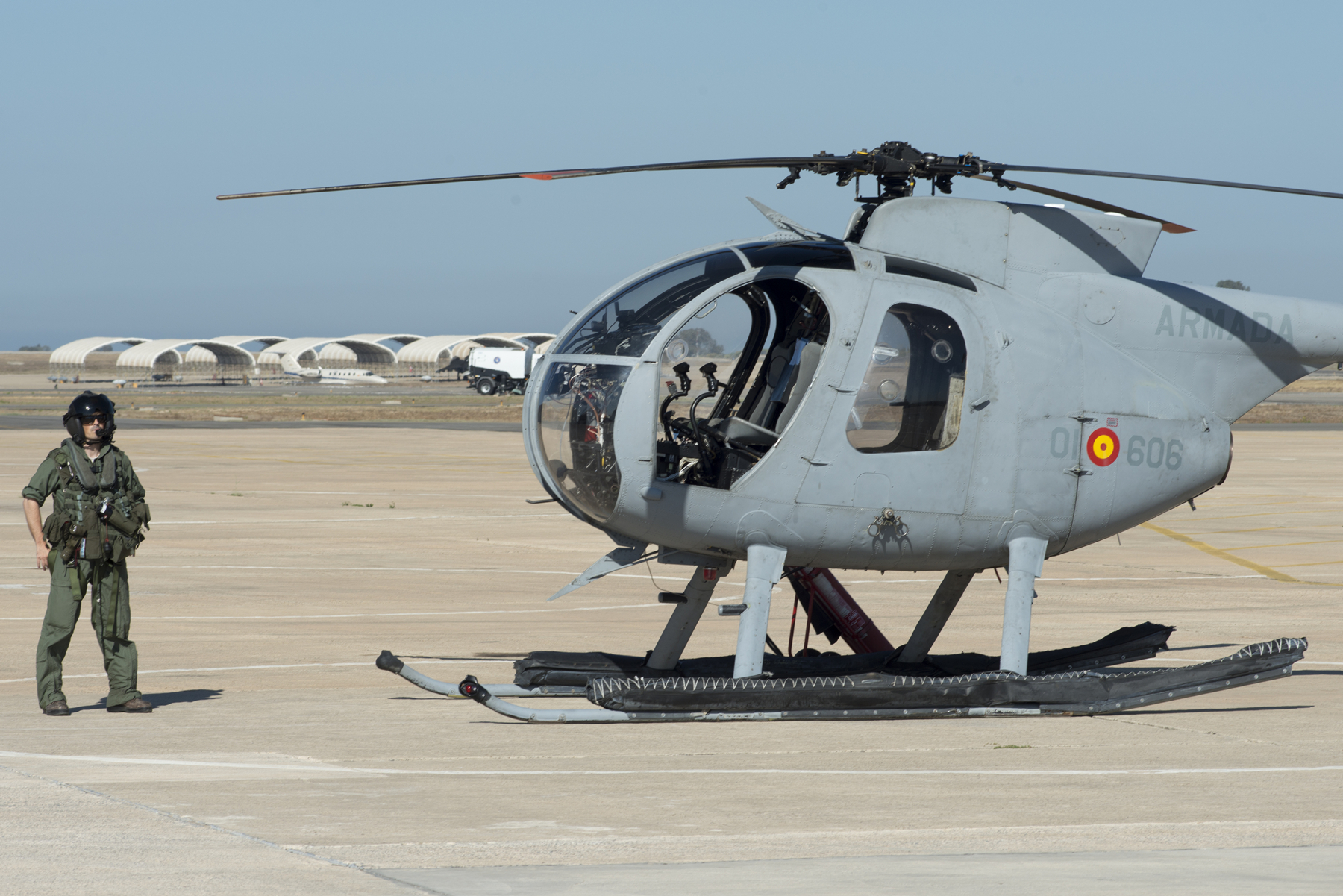
Click on an image below to page or swipe through the gallery:
Patrick Roegies is born and raised in Tilburg, the Netherlands and currently resides in Sittard in the south of the Netherlands where he lives with his wife Joyce. Patrick graduated from a technical study at the HTS in Tilburg in 1997. He currently works as a head of an equipment engineering department in the south of the Netherlands.
His passion towards aviation started at the age of 7 in 1977 when his father took him to nearby Gilze Rijen Air Force base where he witnessed his first howling F-104 Starfighters which were practicing and as a result he got addicted immediately. The F-104’s were present in order to determine a tactic to create a diversion for the “train highjack” which was going on in the Netherlands at that time. The F-104’s were meant to create a diversion by performing an overshoot, kicking in the afterburner directly over the train, creating confusion with the hijackers and enabling the police to master the hijackers. This action has actually been performed and worked.
This is when his passion towards aviation was born. He got permission from his parents to visit the airbase every free hour he had and his father showed him the way by bicycle. Patrick got his first camera in 1984 which was a Canon T50 and shot Kodachrome 64 slides of mainly military aircraft. He changed his gear in the mid-nineties to Nikon and is a Nikon user ever since.
When Patrick obtained his driver license in 1989 he started to visit airbases all over Europe and from 1997 onwards he made worldwide visits to military airbases.
In order to further professionalize his work as an aviation photographer and journalist he started to write military aviation related articles based upon his visits to various nations and their Air Forces. He managed to publish his first article in 2003 and increased the numbers of publications every year.
Patrick can be reached at: [email protected]


